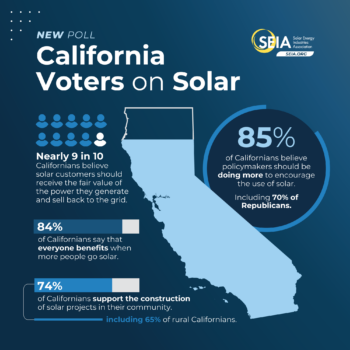Massachusetts Should Raise its Net Energy Metering Caps
Massachusetts is at a crossroads. To keep the state’s solar market moving, the Massachusetts State Legislature must raise the state’s net energy metering caps before the year is out.
Despite progress being made to finalize the new incentive program by the Massachusetts Department of Energy Resources (DOER), called Solar Massachusetts Renewable Target (SMART), the Legislature must act to keep support for solar projects intact.
A little background. The Commonwealth helps customers pay for solar projects through two mechanisms. First, Massachusetts provides an incentive for solar projects through the Solar Renewable Energy Credit (SREC 2) trading program. Second, through net energy metering (NEM), solar customers can cover the costs of their own electricity needs, as well as receive fair compensation for any excess energy they are sending back to the grid.Â
Working hand in hand, these dual measures have helped create nearly 15,000 solar jobs in Massachusetts. That is an impressive number, but it’s also a mere fraction of what’s possible with a long-term, stable NEM policy in place.
Furthermore, these policies have made the Bay State a national leader in solar. Massachusetts now ranks 7th in cumulative solar capacity installed, with enough solar energy to power 244,000 Massachusetts homes. All of that solar is lowering customer bills, reducing pollution and helping the Commonwealth meet its electricity needs.
But because the new SMART program won’t be ready until sometime in 2018, the DOER recently completed a full-scale extension of the SREC 2 program. Now large commercial, industrial and community solar projects, as well as smaller residential projects will be eligible for SREC 2 incentives until the new SMART program is on the books. The Baker Administration deserves much praise for this extension. Now it’s time for the legislature to act as well.
Remember, incentives and net metering work together to provide value for solar customers — and the state as a whole. The state needs both policies to continue building solar projects and creating good jobs. Incentives recognize solar’s environmental and societal benefits, and net metering fairly compensates solar adopters for the actual energy they produce. But right now, solar is not available to many customers across the state because, once again, some utilities have hit their net metering caps. Current law establishes caps as a percentage based on overall utility electric load.
Two utilities, National Grid, which serves a huge swath of customers in central and western Massachusetts, and Unitil, a small utility serving customers on the New Hampshire border, have hit their caps. Hitting the caps essentially means certain solar projects will not move forward in these regions, leaving customers across the state losing out on the benefits solar can provide. A law last year raised the NEM caps by 3 percent and essentially addressed a backlog of solar projects that could not move forward without legislative action. But it was a short-term solution.
Today, interest in solar remains strong, but access remains limited. And the longer we go without action, the bigger the backlog of projects, and the more jobs put on hold.
The Massachusetts State Legislature should raise the NEM caps by 5 percent for public and private projects this year. Based on SEIA’s analysis, this level of cap increase would support another 1,600 megawatts (MW) of solar development and would be consistent with Governor Baker’s solar development goals. This increase would provide the industry the kind of long-term certainty it needs to keep building solar projects and growing jobs.
But at the very least, the Legislature needs to do something by the end of the year. Even a 1 percent cap increase this year would make progress toward the 1,600 MW goal. Now that Governor Baker’s team has created certainty on one side of the solar ledger, it’s time for the Legislature to follow suit.
Â



